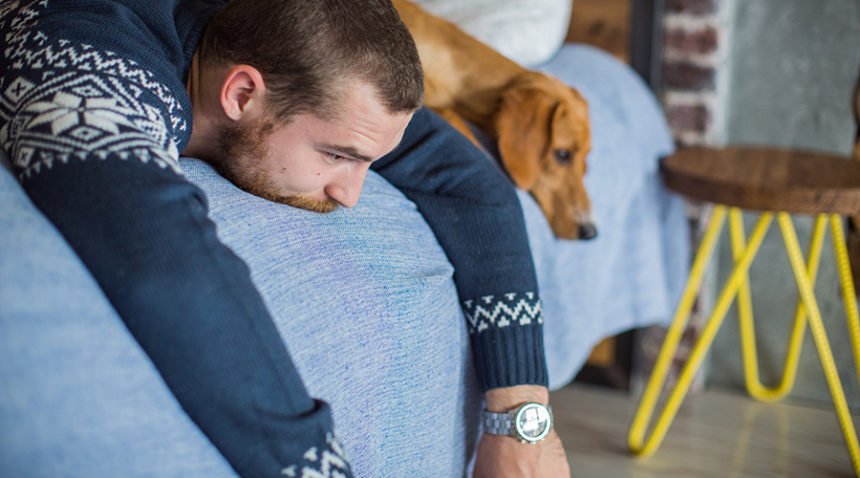We’re living through another winter in the midst of the COVID-19 pandemic, this time with cases surging due to the omicron variant.
With winter’s short days and low temperatures, seasonal affective disorder, or SAD, can be a concern. This is especially true now, as the pandemic has already caused a dramatic increase in depression rates.
“People are struggling with a feeling that this will never end, and the greater amount of darkness, being colder and being inside more can exacerbate those difficult emotions,” says Mary Kimmel, MD, a UNC Health psychiatrist.
What is seasonal affective disorder?
Also called major depressive disorder with a seasonal pattern, SAD is a form of depression that occurs in the same season every year. Although it is most common in the winter, SAD can affect people in any season.
Symptoms include typical symptoms of depression, such as losing interest in activities, changes in appetite or weight, feeling sluggish or low-energy, and problems with sleep and concentration. SAD in particular can include overeating, particularly carbohydrates, and a desire to withdraw from social interactions.
There is less sunlight in the winter, which can disrupt the body’s circadian rhythms. Circadian rhythms are the 24-hour cycles that serve as our internal clocks, regulating several biological processes including the sleep-wake cycle. Disruption of this internal clock can lead to feelings of depression.
Direct exposure to sunlight causes your body to produce vitamin D, which can promote the production of serotonin, a chemical substance in your brain that is associated with boosting mood and helping you feel calmer and more focused.
One theory is that people with SAD may have an imbalance of serotonin. Serotonin is metabolized to melatonin, a hormone that helps you feel sleepy and ready for bed. Melatonin production seems to be triggered by darkness, so with greater darkness it is thought there may be too much melatonin at the expense of serotonin.
“We all have natural cycles, and that is part of being human,” Dr. Kimmel says. “Recognize your cycle and try not to think of it as good or bad. You might need additional supports, and that’s OK.”
How do you protect yourself from seasonal affective disorder?
The good news is that you can lower your risk of experiencing SAD.
Make sure you’re eating healthy meals, getting enough exercise and spending more time outdoors, if possible.
“Even if it is not possible to go out for longer walks or participate in activities outside as you would at other times of year, it is still important to try to go out for a short time, even if it is just to walk to the mailbox,” Dr. Kimmel says.
If you can’t get outdoors, a solution that’s easy and not too costly is a therapeutic light. Dr. Kimmel recommends a 10,000-lux light box, used for 30 to 45 minutes each day.
Note: Typically, you will place the light about 16 to 24 inches from your face with your eyes open but not looking directly at the light.
You also can take a vitamin D supplement if you aren’t getting sufficient sunlight.
It is helpful to go to sleep and wake up around the same time every day. Before bed, have a process to wind down and get restorative sleep; avoiding screens for 30 minutes before bedtime is a good first step. Having a routine that signals that it is time to sleep at night and then in the morning that it is time to get up can help.
How does the pandemic affect seasonal affective disorder?
The COVID-19 pandemic has had a profound effect on people’s mood and anxiety issues. And each phase of the pandemic brings different challenges to mental health. The spike due to omicron has brought new kinds of uncertainty, and we are continually having to adapt to changes.
At the beginning of the pandemic, with most people in some form of lockdown, there was a lot of attention given to mental health and spending time outside, Dr. Kimmel says. Today, the threat of COVID-19 is still disrupting daily life, but society has largely reopened, which means people are trying to balance more and may not be able to get outside as much.
Whether you’re working inside or outside your home, try to go outdoors between meetings or during online school breaks. If your feelings persist, talk to your doctor or look for a mental health therapist. Many therapists are working virtually now.
“Remember to be kind to yourself and to acknowledge your own natural cycles,” Dr. Kimmel says. “For many of us the winter is a period to be a little more withdrawn, but also to remember the spring will come.”
If you’re struggling with low mood or feelings of depression, talk to your doctor or find one near you.

